Geoff Ralston, Y Combinator Partner, on preparing for and pitching at Demo Day.
For weekly recaps of The Macro, sign up here.
In 2005 Y Combinator held its first Demo Day. Eight companies showed off their products and sold their vision to an audience of about 15 investors. Today, accelerators and incubators around the world hold their own demo days, and in 2016 over 200 YC companies will describe their startups to an audience of hundreds. Creating an effective demo day presentation has become an important part of participating in YC, not just due to the importance of Demo Day, but because the very process of fashioning the presentation is valuable. Surprisingly, it can be the first time founders achieve clarity together and come to a shared understanding of their story.1
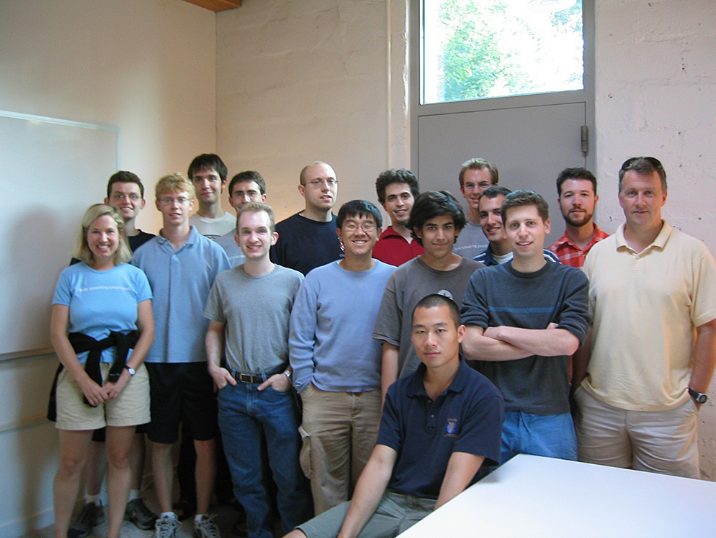
Since that first YC batch we’ve helped over 1000 companies with their presentations. This guide summarizes what we’ve learned and describes how to create an effective demo day presentation. It is the perfect companion to A Guide to Seed Fundraising, where we discuss the mechanics of raising seed capital.2
While reading this guide keep in mind that a short presentation to investors will seldom convince any of them to invest on the spot. This is especially true when the presentation is one of many. In that case, investors are simply trying to manage the flow of information and, more than anything else, figure out who they can ignore and who they’d like to meet. Therefore, your goal should be to intrigue your listeners enough that they will want to meet you and learn more. Keep that goal in mind and follow the prescriptions below, and you are much more likely to have a great demo day.
For readers without the time or inclination to read even this short manual, I’ll give up the secret to a great presentation now: practice. Make sure you know your story so well that it comes out as smoothly as a Steve Jobs pitch. It turns out that the very process of working thoroughly and intensively on your story will force you to improve it and make it more persuasive.
There is a more extensive reading list at the end of this post, but must-reads include:
- How to Present to Investors by Paul Graham3
- How to Design a Better Pitch Deck by Kevin Hale4
- Advice on Pitching by Aaron Harris5
Your Presentation
Like all presentations, your demo day presentation is a story. Each founder will have occasion to act as a salesperson for their company and to tell that story–this is a chance for everyone to get on the same page. Your presentation should be the culmination of an effort to synthesize and understand as deeply as possible your core message, your opportunity, and, especially, the product you are building. The very best demo day presentations have four core qualities:
- Clarity - the presentation is clearly and simply presented.
- Excitement - the opportunity is compelling; it demands listeners pay attention.
- Informative - it teaches listeners something they did not know.
- Memorable - your story stays with the audience; later they can recall who you are and what you do.
The best technique to achieve these qualities is a process of repetition, critique, and editing (including, importantly, selective removal). But in order to build your presentation you need to start with a framework. We call this the story’s vertebrae.
Vertebrae
Most listeners will remember - at most - 3 or 4 key points from a presentation they have just heard, especially if it is one presentation out of many. The vertebrae of a presentation are those points. They will be the most compelling and memorable ways to describe the company and its opportunity. These are not necessarily the points that explain what the company does, but rather those that will be most likely to pique the attention of your audience and convince them that they want to learn more. The presentation is then constructed to convey these points as effectively as possible.
A great way to derive these four points is via the Socratic method. Ask yourselves:
- What are we building and for whom?
- Why hasn’t this been done before?
- Why is it hard to do what we are doing?
- Why is this an opportunity not to be missed?
It is helpful to begin your story as narrowly as you can and then expand upon that simple story only as far as you need to and no further. The best presentation will be complete yet concise: a story told with great clarity.
The Audience
The goal of any presenter is to capture an audience’s attention and bring them along through their story. The very best presenters are captivating, informative, provocative, and sometimes funny. The worst are painfully awkward, convoluted, boring, or all of these.
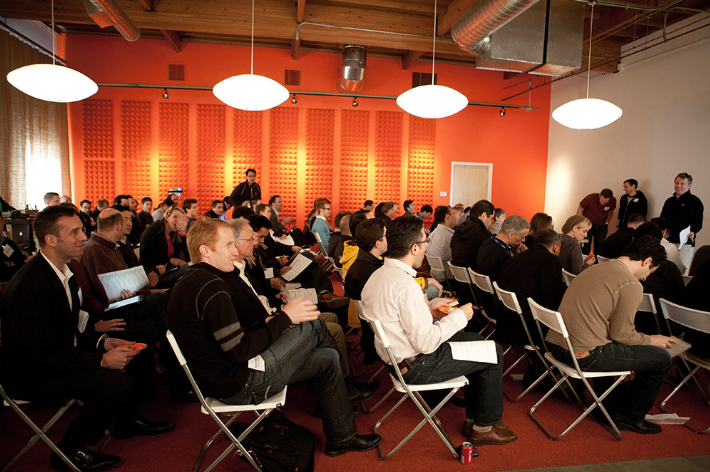
The first step to success is to know to whom you are speaking. Or, rather, to know what it is that speaks to the people in front of you. Investors care only to find the next hot startup, and your goal is to convince them that it might just be you. Unfortunately, you usually have a distressingly short time in which to do this. This is true regardless of the length allotted to your presentation, since most investors will tune out almost instantly.
It turns out that investors have a much easier time deciding which startups they do not like. Since this is the easier path they do it first, and thus their initial goal is to decide which startups they do not have to talk to. This makes their main goal much simpler - to decide which startups they must meet.
A presentation that is built to make a company impossible to ignore, that actually instills fear in investors that missing this opportunity might mean missing the next Airbnb, is most likely to get you that next meeting and a chance to close a deal. All investors, angels, and venture capitalists alike have a deep fear of missing out on the next big thing when it is right in front of them.
Presentation Organization
Demo day presentations tend to follow a consistent structure, but there is also plenty of room for variation, especially for experienced presenters. Here is an outline of the usual components, though the order of how you present them is up to you; in most cases the introduction will come first and the conclusion at the end, though sometimes we advise companies to show impressive traction on the very first slide, and that is all it will take to grab the audience’s attention and hold it. I’ve heard my colleague Justin Kan yell, “Don’t bury the lead,” when a founder finishes with the fact that they have $5mm in revenue and are profitable, rather than starting with that fact.
The Introduction
This is not much different from the so-called elevator pitch. Briefly say what you are doing and why. It is especially helpful to start off by saying as clearly as you can what you are in terms that the audience is likely to understand. For example, “We deliver groceries to customers in their homes,” is clearer than “we are a next generation, AI-based resolver of grocery needs.” This is sometimes called a mission statement, but regardless, strive for conciseness and clarity. A common error is to avoid describing what you do until far into the presentation. That is always a mistake.
The Problem You Are Solving
In almost every case, a simple description of the problem your product solves should be a part of your presentation. However, beware of the caveat above, and do not spend too much time describing your problem leading up to your fantastic solution, and leaving the listener wondering what, exactly, you do until half your pitch is done.
The Product and the Customer
Explain in more detail what you are building and for whom. This used to be where you would show a demo, but ironically, demos seldom work in modern demo day presentations. Explaining rapidly and clearly what your product does can be the most challenging, and rewarding part of getting ready for a demo day.
The Opportunity
This is usually expressed as a total addressable market (TAM). It is vastly better to be concrete and bottoms up (e.g., “We can sell for $X, and we have Y potential customers, leading to an addressable market of $X * Y”) rather than nebulous and top down (e.g., “The software market is a $15 trillion dollar market…and if we can capture just 1% of that market…”). You goal is to persuade the audience that the opportunity is real, that you are not making up data out of thin air, and that your company has a real shot at the dollars you describe.
The Traction
By demo day – thanks to the current era of shareware, frameworks and AWS – most companies are up and running, accepting customers, and, hopefully, growing like weeds. Here is where you get to show your weed-like growth. Bring out your hockey sticks and show us your startup growth curves. Sure you have a great story - but now is the chance to persuade listeners that it is non-fiction. What happens if you have no traction or have not launched? This is not the end of the world. Many startups have successfully presented their companies pre-traction, but you must keep in mind that in that case your success rests on the power of your story to persuade. You will be forced to lean more heavily on your personality and credentials, your story, and on your dream.
The Team
How you integrate your team into the presentation is up to you, but it is important to keep in mind that investors are investing in you and your team above all, and therefore to generate interest you must sell the team. However, realistically you cannot do much during this brief presentation, so only spend time here on truly notable aspects of the team (“Jill has a PhD in rocket science and holds the patent on the core technology upon which this market is built.”).
The Conclusion
Do not conclude with a whimper but rather with a bang. Insist that your audience remember you. Tell them as directly as possible what to remember about your company and opportunity. It is often effective to list explicitly the 3 or 4 vertebrae you would like them to retain.
Although I did not explicitly include a section on business model above, it is important that by the end of your presentation, investors believe you have one. Sometimes the model is obvious and it is unnecessary to belabor it (“we are a new kind of retail store”), but even in these cases it may be necessary to explain why you will be profitable. Few in the audience will believe a model where the unit economics seem impossible. You do not have time to elaborate and explain your model in detail, therefore you must find a way to describe it in simple and easy to retain terms.
Slides
The most important part of your presentation is the story you tell. The slides accompany and enhance your story, but should never dominate. They are the supporting cast and you are the leading man or woman. Work on your story and then build slides that support that story. Do not build a slide deck and then tell a story that supports your slides. In the latter case your presentation will stutter from slide to slide and you will try to memorize and smooth over slide transitions. In the former, your transitions will naturally blend into the story and it will become a cohesive whole.
Please remember that an audience cannot read a slide AND listen to you simultaneously. If you force them to do so, they will probably read the slide and ignore you. Slides have to be dead simple to glance at and understand. In a presentation that lasts a matter of minutes you do not have time to walk your audience through a complex slide. Try this and you will find 80% of your listeners will be reading their email by the time you are through. Do not count on your audience being willing to work to understand you.
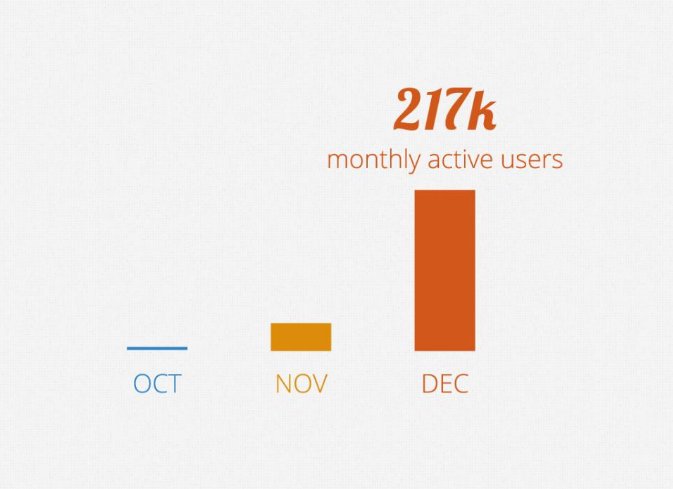
A good test is whether this slide or this point is more or less likely to persuade someone to join or invest in your company. This sort of testimonial feels good but has almost no impact on a listener.
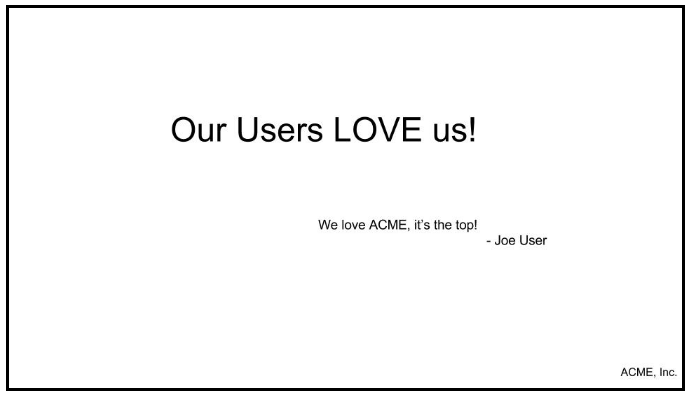
Slide Tips
Creating great slides is an art form that great presenters learn to master. Keep in mind that your slides are your support, not your competition. Kevin Hale’s presentation is a must-read. Follow his directions and keep the following tips in mind:
• A slide should have one main point, never more.
• Use pictures rather than words whenever possible, and make them relevant and additive to your point. In other words, the slide should be an aid to making your point clear. If it is neutral or confusing, it would be better if it weren’t there.
• Minimize the number of words on a slide. If there are words they should be in a very large font. If you have more than 7 words on a slide it is likely to be too many.
• Quotes are great, but make them large and read them aloud to your audience to emphasize the point. Don’t expect the audience to read a quote while you say something else.
• If you have images and text, make sure the text is on an area that provides contrast so it is readable. If necessary, add a semi-transparent background to the text.
• Make sure fonts are large and easily legible from a distance. Likewise, do not choose colors which wash out easily or are hard to see. Primary colors or black are usually safe choices.
• Put important text at the top of the slide. People sitting in the back of an auditorium may not be able to see the lower part of a screen.
• Avoid cumulative graphs. By definition these always show growth - up and to the right - and always cause immediate suspicion that there is no real growth.
Preparation
After coaching founders on hundreds of demo day presentations, there is really only one preparation technique that matters, and luckily it is dead simple: practice. And after you’ve practiced, practice some more. Not only will your delivery improve, but, and this is no less important, you and your co-founders will eventually discover what works and does not work on your own, just from listening and relistening to your own ideas as to why your company will be a massive success.
Practicing with co-founders and/or others is, in fact, vital to your success. Most of you will have no idea what you sound like nor the mistakes you will make when you first practice your presentation. You may speak too loudly, too softly or too quickly. Practice in front of people who will give you honest, unvarnished feedback. If you don’t have people to practice with, record yourself and watch the recordings.
Who Should Present
One person should give the presentation. We strongly recommend against switching back and forth between presenters. It is also terribly easy to overcomplicate this choice. The presenter does not have to be the CEO or the person with the most equity. Simply choose the presenter who presents the best. A demo day presentation is not about glory, it is about generating the most interest possible. Choose the team member who speaks most clearly, with the most confidence, and makes the most persuasive case for your company.
Technique
Every speaker has their own technique and it is important to be authentic. Yes, you are acting, but few of us are good enough to act convincingly as another person. Those who are that skilled probably don’t need to read this part of the guide. The rest of us need to find our own voice, our own passion, and our own inner storyteller. However, there are some common qualities shared by all great speakers from which you can learn:
• Be confident and enthusiastic. Show your passion.
• Project. This is especially important if you are speaking to a large crowd, but will always make you more impressive, signal greater passion, and make you more easily understood.
• Smile, but not too much. It will not only make you seem more relaxed and confident, it will make you more relaxed and confident.
• Speak slowly. We advise founders to speak unnaturally slowly, especially if they talk fast habitually. By the way, this is especially important in a demo day presentation because your listeners are absorbing such a huge amount of information, they need extra time to process what you are saying.
• Pause from time to time. A pause is powerful - it forces the audience to pay attention, forces you to slow down, and gives you time to gather your thoughts.
• Speak clearly. Especially if you are not presenting in your native tongue. • Speak with cadence. With practice, even a memorized script can become more natural and interesting. A monotone, robotic delivery will put your audience to sleep.
• Stand or move naturally. Don’t be stiff. However, don’t move too much. Do not pace. Do not dance! See below for more tips on movement.
Movement
An important part of appearing confident, powerful, and formidable up on stage is how you move during your talk. It is almost never a good idea to be completely static. Your should be as natural as possible and not stand like a statue. An unmoving founder will often leave investors equally unmoved. Equally important is not to move too much so that you distract your audience.
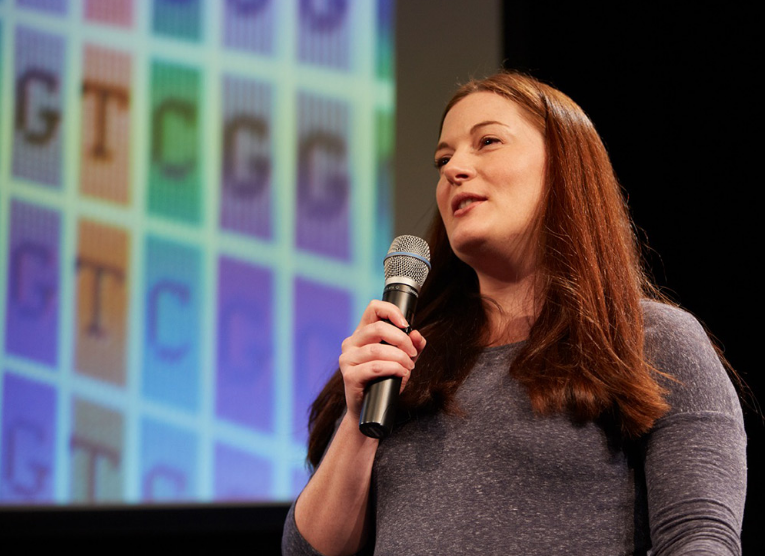
Most of the time you should stand with your feet planted firmly and your weight equally distributed. Try not to shift your weight as that will cause you to sway distractingly. Similarly, although it is perfectly fine to move, do not pace. Take a few steps, stop, talk for a while, then move again if you like.
Always face your audience. Avoid turning to look at your slides. Your presence is diminished each time you lose eye contact with your audience. If you want to point at something, do so while facing towards the front. If you are not sure you are on the right slide and there is no monitor in front of you, you can check, but trust your clicker and don’t do this on every slide.
Generally, repetitive movement is a distraction to the audience whether it is pacing or swinging your arm at each point you make or each time you make a slide transition.
It is very difficult to give your presentation and pay attention to all these things simultaneously. The best way to improve is to have others give you feedback and work to eliminate bad habits on each iteration. It is also very useful to record yourself and watch what you do.
Common Errors
As you practice and refine your presentation, refer back to this list to make sure you aren’t making any classic presenter mistakes. Some of the most common errors we see include:
• Muddying, or leaving out entirely, a description of the problem you are solving and how you are solving it - in other words not communicating what you are doing. This description should be covered very early in your presentation.
• Using jargon, unnecessarily complex phrasing or descriptions, or marketing boilerplate. E.g.. “Our SaaS product provides customers the complex analytical solutions for their enterprise big data needs.”
• Exaggerating the truth. Exaggerations, or worse, outright untruths, are fatal errors.
• Completing your presentations without leaving investors with a clear idea as to why they should care.
• Screen vs. presenter disease - where the audience cannot figure out whether to pay attention to your slides or you, but they are forced to choose.
• Looking at your slides when talking. Face your audience and project to them. Here, as always, practice helps.
• Saying too many words, especially if they are complex or buzzwordy. Listeners get “buffer overflow” and forget everything. Then, they read email. Talking too fast. Talking in front of a lot of people is different than talking one on one.
• Including a slide that does not help investors invest in you. For example, “That’s nuts!” and for that exclamation including a slide with a picture of nuts.
• Including complex graphs.
• Including a video. They are almost never a good idea - investors are there to judge you and therefore want to see you perform live.
• Dancing: it is hard to present like a superstar, but we can learn from superstar presenters. Look how they move. They do not shift from foot to foot or jump jerkily from position to position or, especially, throw their hands and arms around much. They move in deliberate, confident strides and often stop and stare directly into the audience to make a point.
• Plowing through without pause. It is important to pace your talk. Not only do you need to breathe, but so does your audience. In fact, if you do not pause, you miss an opportunity to emphasize your most important points.
• Your approach to your presentation tells listeners a ton about you. If you seem bored or angry or anything but confident and passionate about your idea, your chance of winning them over is next to zero.
Concluding Thoughts
The path to success for startups is highly variable, but successful startups have a lot in common. Companies need to build great products, find customers that love those products, and then scale to many such customers. Every startup needs to create their story, their vision of what and why their company exists. A demo day presentation is often the first, clearest, most succinct version of that story. Hopefully, this guide will help make that presentation a key step on the path to success.
Sources
1 The Magic Thread. My post on the core of a successful demo day pitch.↩
2 A Guide to Seed Fundraising (Imagine K12 Manual), Geoff Ralston. A guide focusing on the fundraising which occurs during, after (and sometimes before) demo day. ↩
3 How to Present to Investors, Paul Graham. Techniques for effective demo day presentations. It is a bit dated, but still is required reading.↩
4 How to Design a Better Pitch Deck. YC partner Kevin Hale’s great guide to building pitch decks.↩
5 Advice on Pitching. YC partner Aaron Harris’s quick guide to best practices.↩
6 How I Pitched My First Startup. Keen.io founder demo day advice.
7 How to Write Your Demo Day Pitch. The other Keen.io founder demo day advice.
8 The Anatomy of a Y Combinator Demo Day Pitch. OATV founder Bryce Roberts on demo day.
9 YC Demo Day Prep Resources. YC Alum Danielle Morrill’s demo day tips.